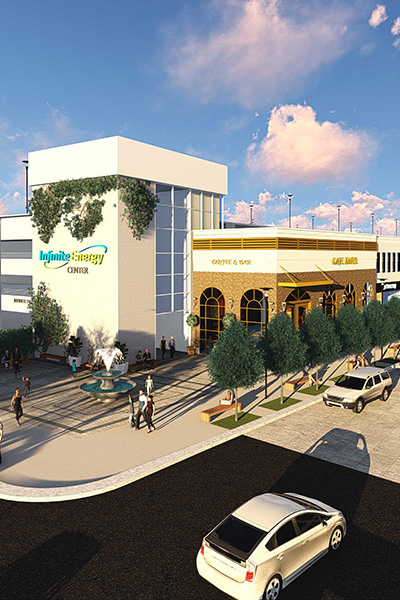GEORGIA HIGHWAY 316:
GEORGIA’S INNOVATION CORRIDOR
COUNTIES IN THE INNOVATION CORRIDOR
The Georgia Bioscience Joint Development Authority is comprised of officials from Athens-Clarke, Barrow, Gwinnett and Oconee counties to create a public body formed to drive and coordinate development in the GA 316 corridor, which connects Athens to Atlanta.
Existing Conditions of Development Assets Conditions in the GA 316 four-county area, based on an independent study conducted by AECOM.
Human and Industrial Capital
The review of demographics and employment data showed a period of high growth in the 1990s,
particularly in Gwinnett County. The University Corridor added 150,000 more jobs during that decade. Overall, the largest industry sectors in the area are Professional & Business Services, Government, and Retail Trade, and the fastest growing sectors since 2000 have been Education & Health Services, Government, and Leisure & Hospitality.
The Corridor’s educational attainment level is similar to that of the MSA, with 23 percent of the
population with a bachelor’s degree, higher than the national average. Twelve percent of the population has a more advanced degree. Clarke and Oconee Counties have a high educational attainment, likely attributable to presence of UGA.
Information and Communications Technology (ICT) and ICT Applications
The study found strengths in employment and industry strength as well as investment and an
institutional support for these industries. There are also key existing players (Cisco and NCR) in the Corridor, which could spur spinoff companies and new technologies.
Life Sciences and Agricultural Sciences
There are anchors at the educational institutions in the area, as well as key companies already
located on the Corridor. The graduating students from area educational institutions provide a ready pool of qualified workers.
Investment Capital
Georgia is one of the states in the southeastern U.S. that attains the highest amount of venture
capital (VC) each year; in fact, it had the most VC in the region in 2001, 2002, 2004, and 2009. From 1995 to 2009, Georgia has received, on average, $559 million each year in VC dollars.
Institutional Capital
A key component of the study was determining the research linkage opportunities among institutions.The timing is right to take advantage of significant collaborations between universities in education, research, and commercialization. Additionally, regional cooperation in marketing and business recruitment via the Innovation Crescent gives the area a competitive advantage.
Physical Capital
- Available land in the area, for expansions and new development
- The Corridor is designated as an employment center in the comprehensive plans of all four counties
- Infrastructure availability
- Small towns along the Corridor add character, which can entice people to live and work there
- The Corridor has two strong anchors (Gwinnett and Athens/Clarke)
MEMBER COUNTIES

ATHENS-CLARKE COUNTY

BARROW COUNTY

GWINNETT COUNTY

